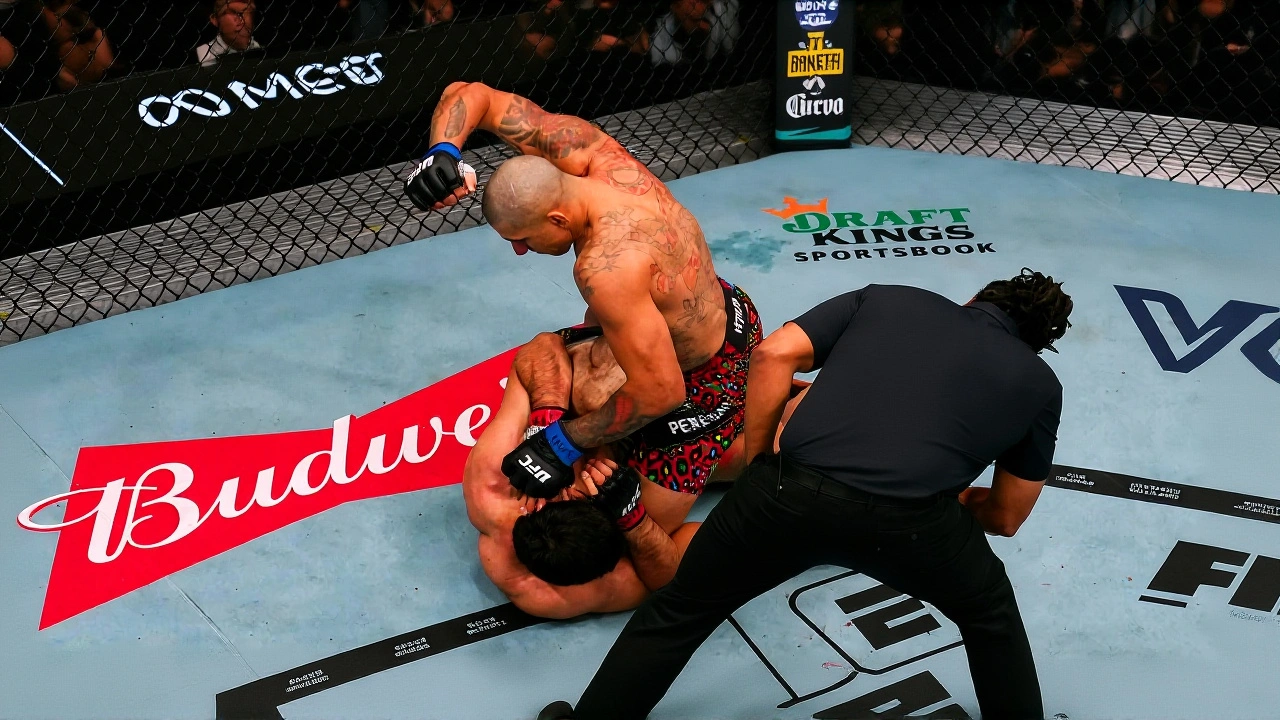Magomed Ankalaev – All the UFC News You Need
When following Magomed Ankalaev, a Russian mixed‑martial‑arts fighter famed as “The Dagestan Destroyer,” who competes in the UFC Light Heavyweight division. Also known as Dagestan Destroyer, he blends powerful grappling with crisp striking to dominate opponents. Magomed Ankalaev has risen through the ranks with a mix of knockout power and submission skill, making him a headline name in today’s MMA landscape.
The UFC, the premier global mixed‑martial‑arts promotion that hosts weekly fight cards and major pay‑per‑view events provides the stage where Ankalaev showcases his talent. The organization’s structure, from fight scheduling to ranking systems, directly influences a fighter’s path to title contention. Within the Light Heavyweight division, the 205‑225 lb weight class known for a blend of speed and power, Ankalaev faces a deep pool of talent, each bout shaping his climb toward a championship shot.
Mixed Martial Arts, a full‑contact sport that mixes striking, wrestling and submission techniques demands a versatile skill set. Ankalaev’s training camp focuses on refining his Sambo background while adding boxing precision, allowing him to control the pace of a fight whether he’s on the feet or the ground. This dual threat reflects a core principle: success in MMA often hinges on a fighter’s ability to transition smoothly between disciplines.
Key Highlights of Ankalaev’s Recent Career
In his latest UFC outing, Ankalaev secured a unanimous decision win that solidified his position in the top‑five of the Light Heavyweight rankings. The fight illustrated three critical aspects of his game plan: effective distance management, timely takedowns, and a finishing instinct that kept his opponent guessing. Analysts noted his ability to adapt mid‑fight, a trait common among elite contenders.
Beyond the cage, Ankalaev’s marketability has grown. Sponsorship deals with combat‑sport apparel brands and appearances on international podcasts have expanded his fan base beyond Russia. This off‑octagon exposure aligns with the UFC’s global expansion strategy, where fighters become ambassadors for the sport in emerging markets.
Looking ahead, speculation circles around a potential showdown with the division’s current champion. If the UFC match‑makers pair Ankalaev with the title holder, the bout would embody the semantic triple: Magomed Ankalaev competes in the UFC Light Heavyweight division, and the division crowns its champion each year. Such a matchup would test his grappling against a striking‑focused champion, highlighting the interplay between different MMA skill sets.
Training camp updates reveal that Ankalaev is adding Brazilian Jiu‑Jitsu drills to his regimen, aiming to enhance his ground‑game finishing rate. This adjustment reflects the broader trend in MMA where fighters continuously evolve, integrating new techniques to stay ahead of opponents. The evolution underscores the third semantic connection: UFC organizes Mixed Martial Arts events worldwide, providing a platform where fighters like Ankalaev can display evolving skill sets.
Fans also follow his social media for behind‑the‑scenes glimpses of his preparation. Short clips show sparring sessions, weight‑cut routines, and mindset drills. These insights help casual viewers understand the dedication required to compete at the highest level, while hardcore fans appreciate the technical nuances of his approach.
Statistically, Ankalaev boasts a strike accuracy of 58% and a takedown success rate of 45%, numbers that rank him among the most efficient Light Heavyweights. Such metrics are often used by UFC analysts to predict fight outcomes, reinforcing the fourth semantic link: Light Heavyweight division features fighters weighing between 205‑225 lb, and statistical performance helps determine rankings.
On the promotional side, the UFC’s media team often highlights Ankalaev’s “Dagestan Destroyer” persona in fight previews, creating a narrative that resonates with both regional and international audiences. This branding effort ties back to the final semantic triple: Magomed Ankalaev’s fighting style relies on powerful grappling and knockout power, which the UFC leverages to build compelling storylines.
In summary, the collection of stories you’ll find below covers everything from Ankalaev’s recent fight analysis, upcoming bout rumors, training insights, and statistical breakdowns. Whether you’re a casual viewer seeking quick highlights or a dedicated fan digging into technique, the articles provide a well‑rounded view of his journey in the UFC Light Heavyweight division.
Dive into the latest updates and see how Magomed Ankalaev continues to shape the landscape of modern mixed martial arts.
Pereira Snatches Light Heavyweight Title in 80‑Second TKO at UFC 320
Alex Pereira reclaimed the UFC light heavyweight championship with an 80‑second knockout of Magomed Ankalaev at UFC 320 in Las Vegas, revealing a fractured tibia caused his earlier loss.

